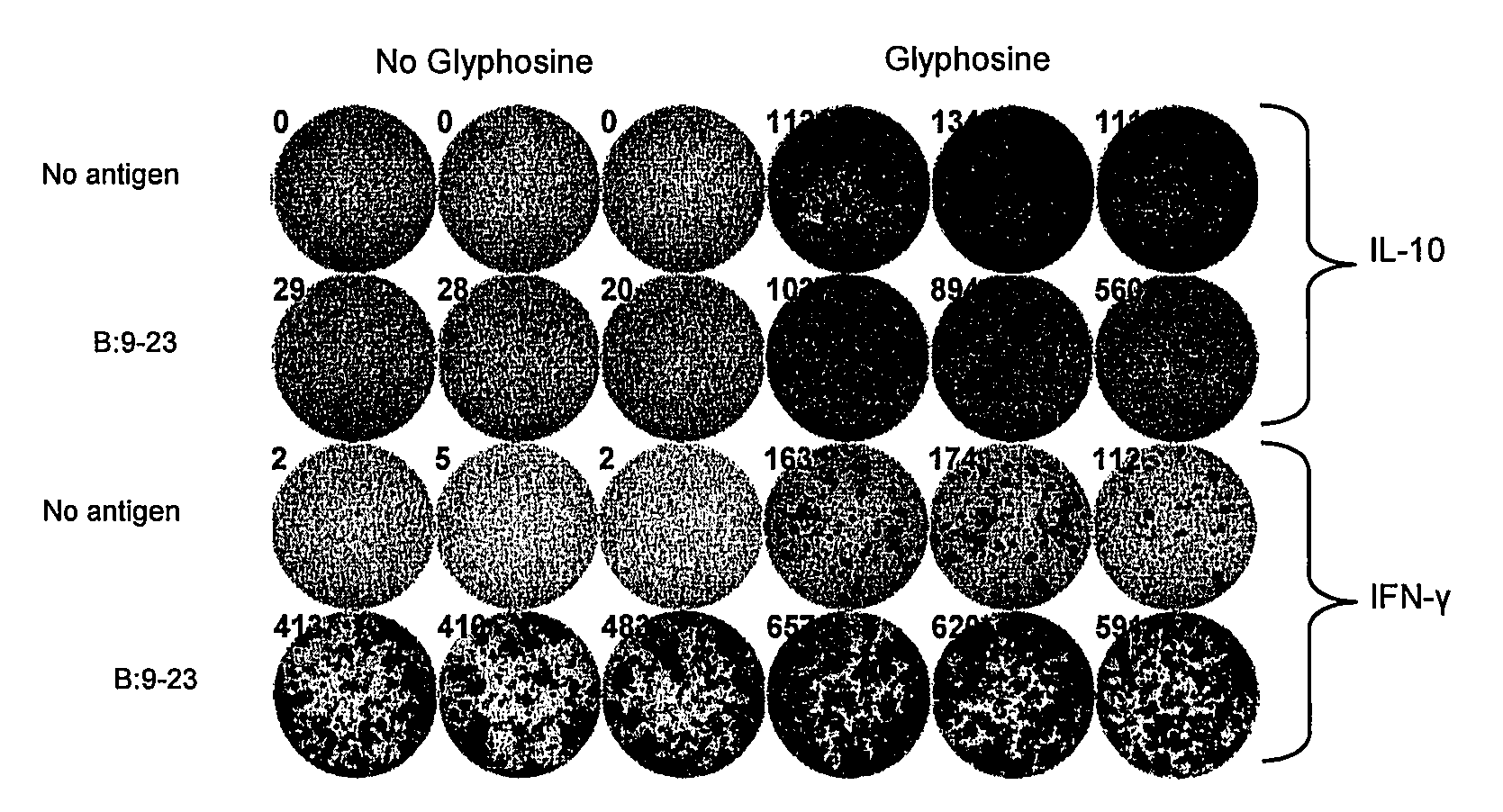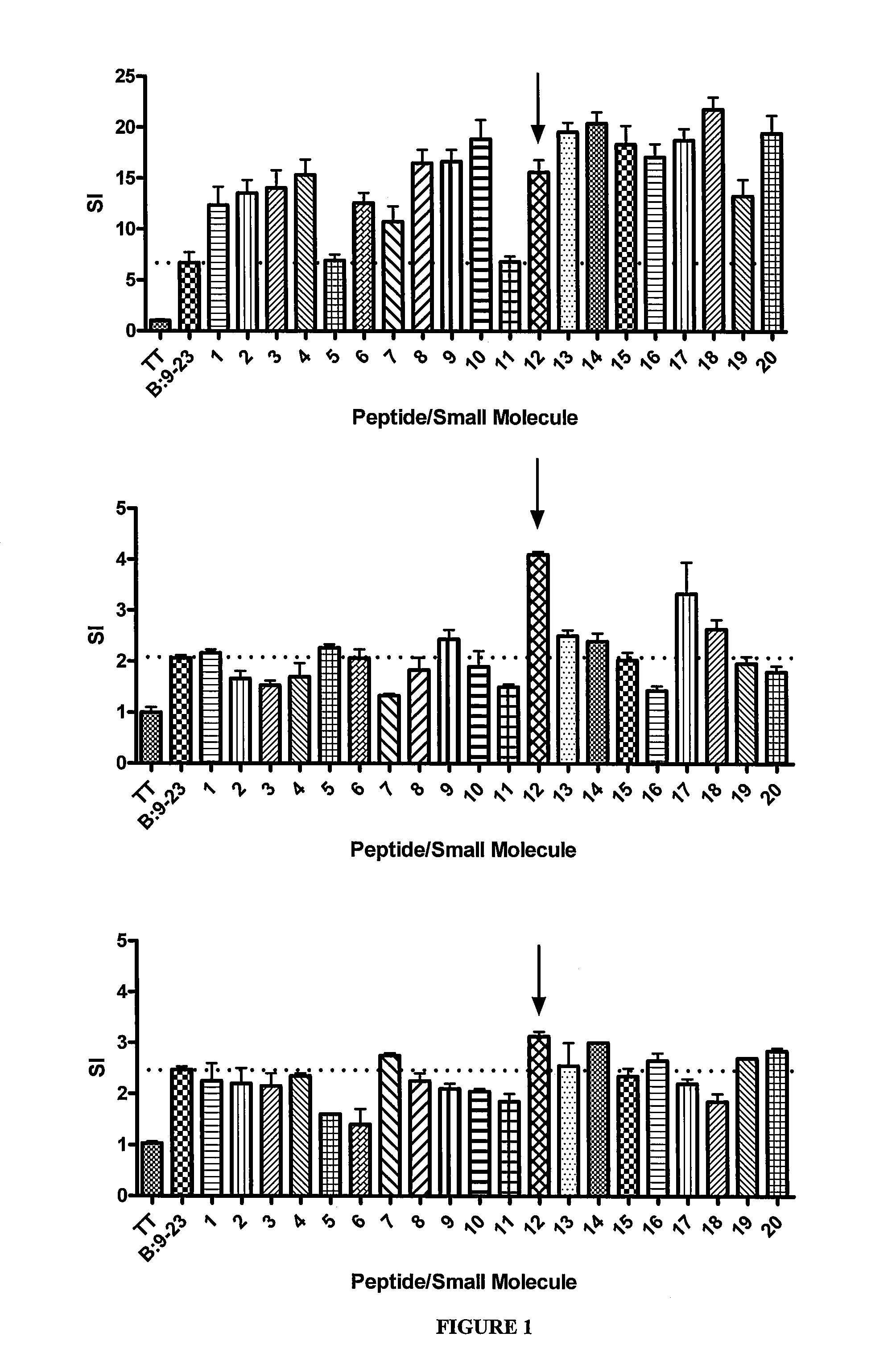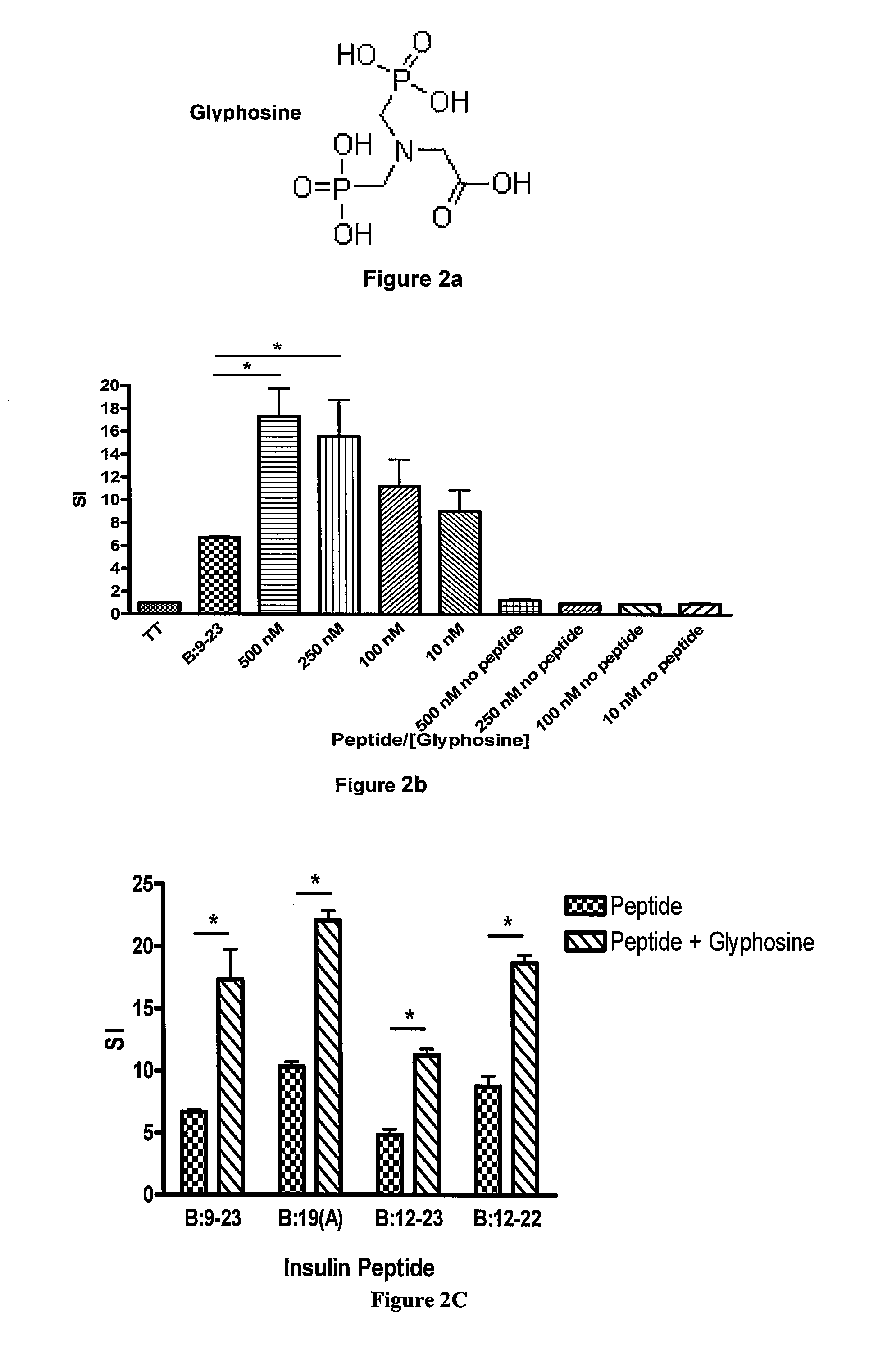Compounds that modulate autoimmunity and methods of using the same
a technology of compound and autoimmunity, applied in the field of therapeutic compounds, can solve the problems of affecting the effect of treatment, debilitating and life-threatening, and often chronic autoimmune diseases, and achieve the effect of enhancing the binding of an mhc class ii molecul
- Summary
- Abstract
- Description
- Claims
- Application Information
AI Technical Summary
Benefits of technology
Problems solved by technology
Method used
Image
Examples
example 1
Selection of Drug Candidates
[0143]To identify candidate molecules predicted to “dock” in pocket 9 of the I-Ag7 binding groove, a supercomputer was used to screen 140,000 small molecules from the NCI library of “drug-like” compounds (NCI Developmental Therapeutics Program's (NCI / DTP) repository). Existing crystal structures available for modeling include I-Ag7 with a bound GAD65 peptide and B:9-23 bound to DQ8, but not I-Ag7 with the B:9-23 peptide. The antigen binding clefts of DQ8 and I-Ag7 were superimposed to examine the critical contacts. The B:9-23 peptide was displayed with I-Ag7 in the orientation and conformation bound to DQ8. This conformation of the insulin B:9-23 peptide was complementary with the antigen binding cleft of the crystal structure of I-Ag7. All NCI organic compounds were docked in 1000 orientations using the DOCK v5.1.0 program algorithm {111} and scored based on a combination of polar and non-polar interactions.
example 2
In Vitro Testing of Compounds
[0144]The top 40 scoring compounds (shown in Table 1) were screened for their ability to alter anti-B:9-23 T cell responses to three different T cell hybridomas, all with the dominant conserved Vα5D-4 TCR element but different CDR3α, Jα, and TCRβ chains. FIG. 1 shows the results of this in vitro testing. Multiple compounds enhanced TCR signaling of the 8-1.1α1 hybridoma, while fewer compounds stimulated the BDC 12-4.1 and 12-4.4 hybridomas. Given the positively charged arginine in pocket 9 of I-Ag7, each of the top 40 compounds are negatively charged. The same assays evaluating hybridoma response were performed using 40 random compounds from the NCI / DTP repository. Testing of these control compounds did not result in stimulation above insulin B:9-23 peptide alone with any of the three hybridomas.
TABLE 1Top 40 scoring small molecules for pocket 9 of I-Ag7Compound Name / Chemical Formula / Molecular Weight / DockingHybridoma ResponseNCI NumberStructureScore8-1.1...
example 3
Effects of Glyphosine on Peptide Binding to Purified I-Ag7
[0146]To document direct effects of glyphosine on peptide binding to purified I-Ag7 an I-Ag7 protein construct was expressed in baculovirus with linked peptide. The flexible linker contained a thrombin cleavage site, allowing for thrombin cleavage of the linker and release of the peptide. Glyphosine was able to directly enhance B:9-23 peptide binding to the empty I-Ag7 over a wide concentration range (FIG. 2, panel e). The binding curve shown in panel e of FIG. 2 did not change based upon time of incubation, 2 hours versus 24 hours, suggesting that glyphosine changes the equilibrium of the B:9-23 / MHC class II binding reaction and does not simply catalyze B:9-23 peptide binding to I-Ag7.
PUM
| Property | Measurement | Unit |
|---|---|---|
| Volume | aaaaa | aaaaa |
| Angle | aaaaa | aaaaa |
| Absorbance | aaaaa | aaaaa |
Abstract
Description
Claims
Application Information
 Login to View More
Login to View More - R&D
- Intellectual Property
- Life Sciences
- Materials
- Tech Scout
- Unparalleled Data Quality
- Higher Quality Content
- 60% Fewer Hallucinations
Browse by: Latest US Patents, China's latest patents, Technical Efficacy Thesaurus, Application Domain, Technology Topic, Popular Technical Reports.
© 2025 PatSnap. All rights reserved.Legal|Privacy policy|Modern Slavery Act Transparency Statement|Sitemap|About US| Contact US: help@patsnap.com



